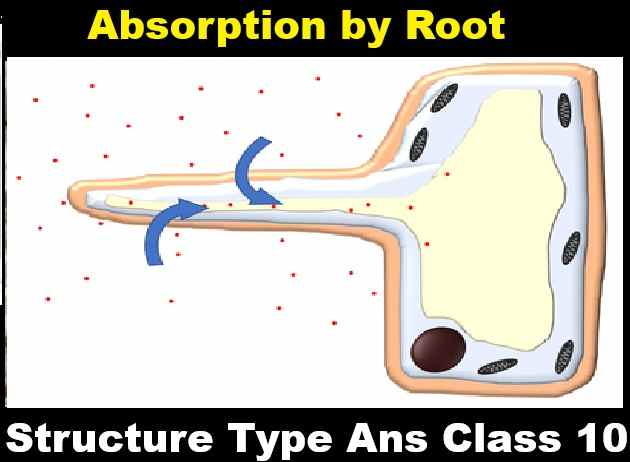ML Aggarwal Simple and Compound Interest Check Your Progress Class 8 ICSE Ch-8 Maths Solutions. We Provide Step by Step Answer of Check Your Progress Questions for Simple and Compound Interest as council prescribe guideline for upcoming board exam. Visit official Website CISCE for detail information about ICSE Board Class-8.
ML Aggarwal Simple and Compound Interest Check Your Progress Class 8 ICSE Maths Solutions
| Board | ICSE |
| Publications | Avichal Publishig Company (APC) |
| Subject | Maths |
| Class | 8th |
| Chapter-8 | Simple and Compound Interest |
| Writer | ML Aggarwal |
| Book Name | Understanding |
| Topics | Solution of Check Your Progress Questions |
| Edition | 2023-2024 |
Simple and Compound Interest Check Your Progress
ML Aggarwal Class 8 ICSE Maths Solutions
Page-147
Question 1. Find the amount and the compound interest on ₹5000 for 2 years at 6% per annum interest payable yearly.
Answer:
Given:
P=₹5000
n=2years
R=6%.
Consider the concepts of compound interest,
A=P(1+r/100)n
From the question,
A=5000(1+6/100)²
A=5000(106/100)²
A=₹5618
A=CI+P
From the question,
5618=CI+5000
C.I=₹618
Question 2. Find the amount and the compounded interest on ₹7400 for 1 year at 5% per annum, interest payable half-yearly.
Answer:
Given Principal = 7400 rupees, r = 5%, n = 1 year.
Given that Interest is compounded half-yearly.
A = P(1 + r/2 * 100)^n * 2
= P(1 + 5/200)¹ * 2
= 7400(1 + 1/40)²
= 7400(41/40)²
= 7400(1681/1600)
= 12439400/1600
= 7774.625.
Therefore, Amount = 7774.625.
We know that C.I = A – P
= 7774.625 – 7400
= 374.625.
Therefore, Compound Interest = 374.625.
Question 3. Find the difference between C.I. and S.l. on a sum of ₹5000 for 2 years at 8% per annum payable yearly.
Answer:
p = initial amount.
r = interest rate.
t = time.
Simple interest = (p * r * t)/100.
Compound interest = p [ ( 1 + (r / 100)) ^ t – 1 ].
We need to find the difference between compound interest and simple interest on rupees 5000 of 2 year at 8% per annum payable yearly.
Simple interest = (5000 * 8 * 2) / 100 = 800.
Compound interest = 5000 [ ( 1 + (8/100)) ^ 2 – 1 ] = 5000 * 208/100 * 8/100.
= 832.
Difference between compound interest and simple interest = 832 – 800
= 32.
Question 4. Find the amount and compound interest on ₹10000 for 1(1/2) years at 10% per annum, compounded half yearly. Would this interest be more than the interest he would get if it was compounded annually?
Answer:
A = P[1 + (r/100)]n
P = ₹ 10,000
n = 112 years
R = 10% p.a. compounded annually and half-yearly
where , A = Amount, P = Principal, n = Time period and R = Rate percent
For calculation of C.I. compounded half-yearly, we will take the Interest rate as 5% and n = 3
A = P[1 + (r/100)]n
A = 10000[1 + (5/100)]3
A = 10000[1 + (1/20)]3
A = 10000 × (21/20)3
A = 10000 × (21/20) × (21/20) × (21/20)
A = 10000 × (9261/8000)
A = 5 × (9261/4)
A = 11576.25
Interest earned at 10% p.a. compounded half-yearly = A – P
= ₹ 11576.25 – ₹ 10000 = ₹ 1576.25
Now, let’s find the interest when compounded annually at the same rate of interest.
Hence, for 1 year R = 10% and n = 1
A = P[1 + (r/100)]n
A = 10000[1 + (10/100)]1
A = 10000[1 + (1/10)]
A = 10000 × (11/10)
A = 11000
Now, for the remaining 1/2 year P = 11000, R = 5%
A = P[1 + (r/100)]n
A = 11000[1 + (5/100)]
A = 11000[(105/100)]
A = 11000 × 1.05
A = 11576.25
Thus, amount at the end of 1(1/2) when compounded annually = ₹ 11576.50
Thus, compound interest = ₹ 11576.25 – ₹ 10000
= ₹ 1576.25
Question 5. What sum invested for 11⁄2 years compounded half-yearly at the rate of 4% p.a. will amount to ₹ 132651?
Answer:
Use the compound interest formula,
Where, A is the amount A=Rs.132651.
P is the principal
r is the rate of interest 4%.
Rate is compounded half yearly so,
t is the time t=1 and half year = 3 half year
Time is compounded half yearly t=3 years
₹132651=P(1+2/100)^3
132651=P(51/50)^3
P= 132651×50×50×50/51×51×51
P=₹125000
Therefore, sum =₹125000
Question 6. Find the time (in years) in which ₹ 12500 will produce ₹3246.40 as compound interest at 8% per annum, compounded annually
Answer:
Given,
p= ₹12,500
a= p+i = ₹(12,500 + 3,246.40) = ₹15,746.49
r= 8% or 0.08 per annum
t= x years
1st year:
S.I:
8% of ₹12,500
=8/100 × 12,500
=8 × 125
=₹1,000
Therefore, 1st year a= ₹(12,500 + 1,000) = ₹13,500
2nd year:
C.I:
8% of ₹13,500
=8/100 × ₹13,500
=8 × 135
=₹1,080
Therefore, 2nd year a= ₹(13,500 + 1,080) = ₹14,580
3rd year:
C.I:
8% of ₹14,580
=8/100 × 14,580
=0.08 × 14,580
= ₹1,166.40
Therefore, 3rd year a= ₹(14,580 + 1,166.40) = ₹ 15,746.40
Total C.I. accumulated in a period of 3 years= ₹ (1,000 + 1,080 + 1,166.40) = ₹3,246.40
Hence 3 years is answer
Question 7. Find the amount and compound interest on ₹2500 in 2 years if the rate are 5% and 6% for the successive years.
Answer:
1st year CI = 2500 x 5/100 = Rs. 125
2nd year P = 2500+125= Rs. 2625
2nd year CI= 2625 X 6/100= Rs. 157.5
Total CI = 157.5 + 125 = Rs. 282.5
Amount at the end of 2nd year- 2625+ 157.5
= Rs. 2782.5
— : End of ML Aggarwal Simple and Compound Interest Check Your Progress Class 8 ICSE Maths Solutions :–
Return to – ML Aggarwal Maths Solutions for ICSE Class -8
Thanks
Please Share with Your Friends


